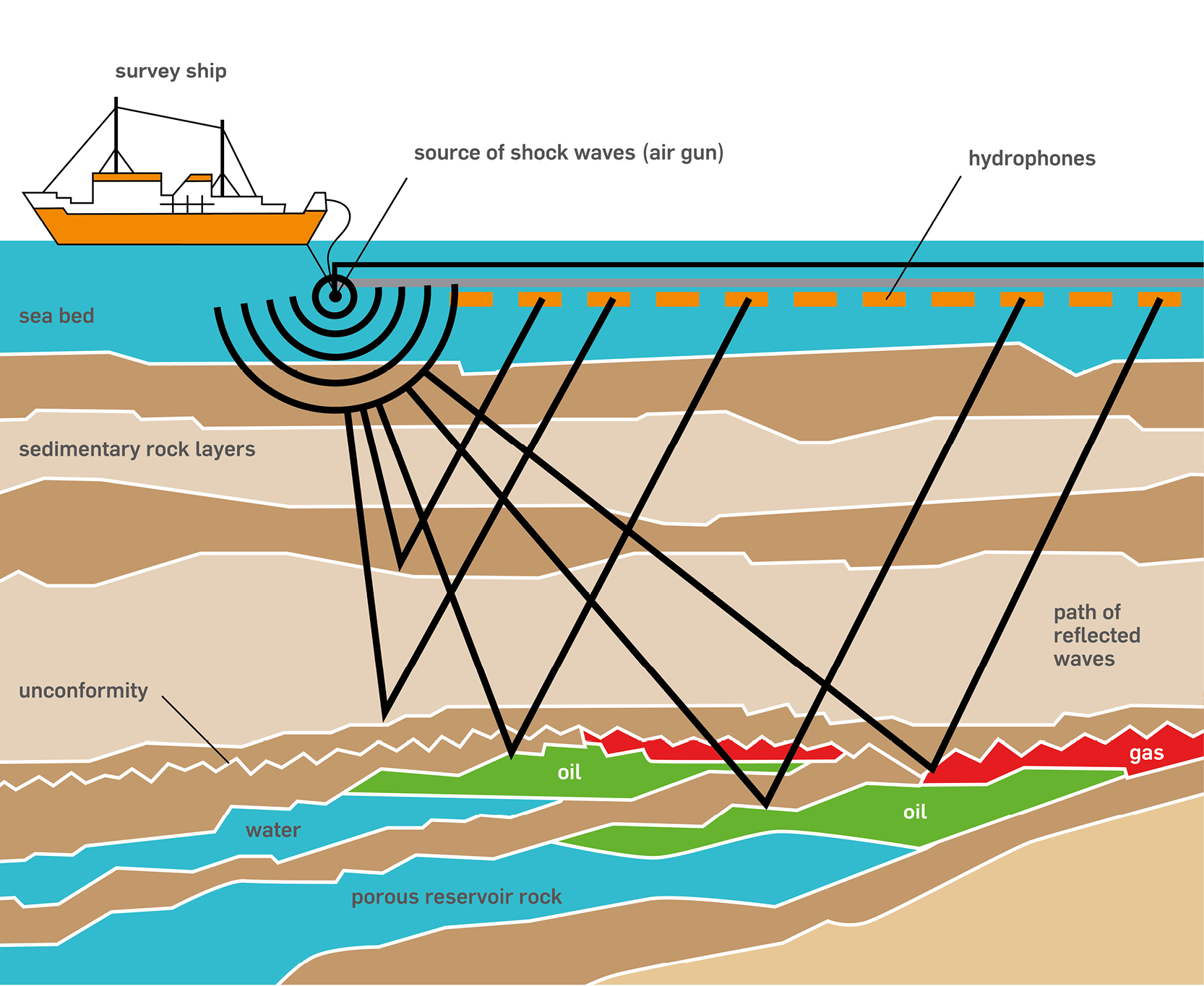The oil and gas industry comprises three parts: upstream — the exploration and production sector of the industry; downstream — the sector which deals with refining and processing of crude oil and gas products, their distribution and marketing; and midstream —the sector that links the upstream and downstream entities, mainly are transportation and storage services with pipelines and gathering systems. Companies operating in the industry may be regarded as fully integrated (i.e. have three upstream, midstream and downstream interests, Exxonmobil is an example of these kind of companies), or may concentrate on a particular sector, such as exploration and production, commonly known as an E&P company, or just on refining and marketing (a R&M company). Many large companies operate globally and are described as multi-nationals, whilst other smaller companies concentrate on specific areas of the world. Very often a country has handed its rights and interests in oil and gas in a national company, with its name often associated with name of the host country like Saudi Aramco, Petro Vietnam. In the upstream sector, service and contractor companies play a big role in support of upstream operations as they provide technical and nontechnical services to the industry, including specialist and equipment, ranging from geophysical surveys, drilling, well intervention, to catering and healthcare services etc… The fundamental process of exploration remains the same since geologists were first involved in oil discovery but with modern technology engineers are able to improve performance and effectiveness as well as safety during process. In order to understand the activities that involve in exploration and production processes the picture below provides an overview of principal steps and related requirement on ground in operations.

Exploration surveying is the first stage of the search for potential hydrocarbon-bearing rock formations, geological maps are reviewed in order to identify major sedimentary basins. Aerial photography may need to be used to identify promising landscape formations such as faults or anticlines. Detailed information is assembled using a field geological assessment, followed by one of three main survey methods: magnetic, gravimetric and seismic. The most common and effective assessment method that often is undertaken as the first field activity is seismic survey. Explorers use seismic survey to obtain detailed images of local geological structures to determine the location and size of possible oil and gas reservoirs, the method based on different characteristic of reflected soundwaves that transmitted through different rock types beneath the surface. An energy source transmits a pulse of acoustic energy into the ground which travels as a wave into the earth. At each point where different geological strata exist, a part of the energy is transmitted down to deeper layers within the earth, while the remainder is reflected back to the surface. It is captured by a series of sensitive receivers called geophones or seismometers on land, or hydrophones submerged in water. Special cables transmit the electrical signals received to a mobile laboratory, where they are amplified and filtered and then digitized and recorded on magnetic tapes for later analysis.
Offshore seismic surveying activity
Exploratory drilling: Once a promising geological structure has been identified, the only way to confirm the presence of hydrocarbons is to drill an exploratory well, known as “wildcat”. Factors that determine which location will be conducted drilling operation are characteristics of the underlying geological formations, the convenience of logistics services taking into account of environmental and economical factor. Once drilling starts, drilling fluid or mud is continuously circulated down the drill pipe and back to the surface equipment. Its purpose is to balance underground hydrostatic pressure, cool the bit and flush out rock cuttings, hence the drilling fluid needs to be carefully calculated for the density and its components must be compatible with rocks properties. Casing tube is run into completed sections of the borehole and cemented into place. The casing provides structural support to maintain the integrity of the borehole and isolates underground formations. Exploratory drilling is essential for obtaining actual temperature measurements, rock samples, retrieving fluid samples for analysis. Borehole logging and initial testing in this exploratory stage give more valuable information of the reservoir for further activities in next stage of field development such as estimation reserves, well design and completion etc…
Oil Drilling
Development and production: Having established the overall picture of potential and the size of the field, the following wells drilled are called production wells. A small reservoir may be developed using one or more of the appraisal wells. A larger reservoir will require the drilling of additional production wells. Multiple production wells are often drilled from one operation site to reduce the overall infrastructure cost. The number of wells required to exploit the hydrocarbon reservoir varies with the size of the reservoir and its geology as well as where the field is located onshore or offshore, this is one of the most crucial decisions in any oil and gas field development project. Large oilfields can require a hundred or more wells to be drilled, whereas smaller fields may only require several wells. With a larger number of wells being drilled, the level of activity increases in proportion. The well sites will be occupied for longer, and support services such as workforce accommodation, water supply, waste management, and other services will correspondingly increase. As each well is drilled it has to be prepared for production before the drilling rig departs. The heavy drill pipe is replaced by a lighter weight tubing in the well and occasionally one well may carry two or three strings of tubing, each one producing from different layers of reservoir rock. At this stage the blowout preventer, which is preventing uncontrolled fluid goes up to the surface, is replaced by a control valve assembly, usually called the Christmas Tree. Most new oil and gas wells are initially free flowing, the underground pressures drive the liquid and gas from the well bore up to the surface. The rate of flow depends on a number of factors such as the properties of the reservoir rock, the underground pressures, the viscosity of the oil, and the net pay thickness from perforation activity. When the reservoir pressure can no longer provides the free flow, some of additional artificial lift systems is required, such as a pumping mechanism or the injection of gas or water to maintain reservoir pressures. It is now quite common to inject gas, water, or steam into the reservoir at the start of the field’s life in order to maintain pressures and optimize production rates and the ultimate recovery potential of oil and gas. This activity may require the drilling of additional wells, called injection wells. Other methods of stimulating production can be used, such as hydraulic fracturing of the hydrocarbon bearing formation, and acid treatment (particularly in limestones) to increase flow channels. Once the hydrocarbon reaches the surface, it runs to the central production facility which gathers and separates the produced fluids (oil, gas and water). The production facility processes the hydrocarbon fluids and separates oil, gas and water. The oil must usually be free of dissolved gas before export. Similarly, the gas must be stabilized and free of liquids and unwanted components such as hydrogen sulphide and carbon dioxide. Any water produced is treated before disposal.

Routine operations on a producing well include a number of monitoring, safety and security programs, maintenance tasks, and periodic downhole servicing to maintain production. Petroleum engineers are able to extract only a portion of the oil present using primary recovery (i.e. natural pressure and simple pumping) but a range of additional recovery methods are available known as enhance oil recovery methods. For example, secondary recovery uses waterflood or gas injection, and tertiary methods employing chemicals, gases or heat may also be used to increase the efficiency of oil recovery. Since the production operation is a long-term development, the temporary facilities used in exploration are replaced by permanent facilities and are subject to detailed planning, design and engineering and construction. In offshore production developments, permanent structures are necessary to support the required facilities, since typical exploration units are not designed for full scale production operations. Recent advances in horizontal drilling have enhanced directional drilling as a means of concentrating operations at one site and reducing the footprint on land of production operations and the number of platforms offshore. The technology now enables access to a reservoir up to several kilometers from the drill rig, while technology is developing to permit even wider range. This allows for more flexibility in selecting a drill site, particularly where environmental concerns are raised.
Directional drilling
Decommissioning and site abandonment. The decommissioning and site abandonment at the end of their commercial life, typically 20–40 years, may involve plugging the wells, removal of buildings, platform and equipment, restoration of the site to environmentally sound conditions and continued monitoring of the site after closure. Planning for decommissioning is an integral part of the overall management process and should be considered at the beginning of the development during design, and is equally applicable to both onshore and offshore operations.
Oil and gas field development lifecycle process







